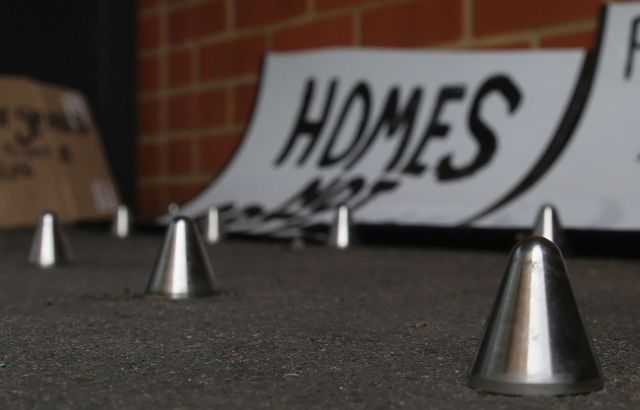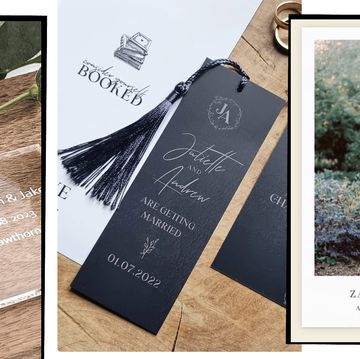This week, artist Stuart Semple launched a new project aimed at tackling the hostility towards homelessness.
A general furore broke out in 2014 when, in the city of London, metal spikes started appearing on the ground outside of private blocks of residential flats. The spikes were designed to make it impossible for rough sleepers to take shelter on the floor, outside of the private accommodation.
The British general public protested on the grounds that the spikes seemed an unusually violent and hostile response to a complicated problem. There were also protests that claimed councils should do a better job of providing sheltered accommodation and therapy to the homeless, instead of making the city more and more unwelcome to them.
Stuart Semple's project 'Hostile Design' was born when he saw and photographed anti-homeless bars on benches in his local city of Bournemouth, UK. Less visibly brutal than the spikes, the bars on benches were still designed to make it difficult for people to sleep there.
When his Facebook posts about the bars went viral – with more than 1 million views on the first day – he immediately began plotting the campaign. The artist said he wants people to wake up to what he believes is an 'immoral practice.' The implication being that city councils avoid tackling the real issues of homelessness, by pushing the homeless out of sight.
This week, Semple launched HostileDesign.org - a site that allows members of the public around the world to name and shame councils and city planners who commission pieces of 'hostile design' to engender inhuman degrees of exclusion and discrimination.
Through Instagram, users can photograph and share images of local design crimes, making the site a global online database of hostile design. The aim is to enable people to spot 'hostile design', as so often it blends into its environment. By making hostile design more visible, the hope is that we can all learn to spot it and heap pressure on the councils who think this is the way to tackle homelessness.
'Design should be used to make things better for people,' Semple said. 'I didn't spend time at art and design school to learn to make stuff that makes people's lives worse. I knew straight away what it was because I spend a lot of my time looking at public furniture – this is designed for one reason and one reason only and that's to tell homeless people they are not welcome here.'
His HostileDesign.org campaign has already been supported by rapper and broadcaster Professor Green whose Instagram feed slammed the decision to install the bars, asking: 'What's the message here? 'Hey you poor sods with no safety net – you better really hope life doesn't throw any **** at you now! And God forbid you make a bad life decision! Cause you won't have the 'comfort' of this bench to sleep on! Ha!' Again, nothing done to tackle the problem, just something to make it more invisible so we can pretend it isn't happening.'
Head over to HostileDesign.org for more information on the campaign.

Natasha Bird is the Former Executive Editor (Digital) of ELLE.













